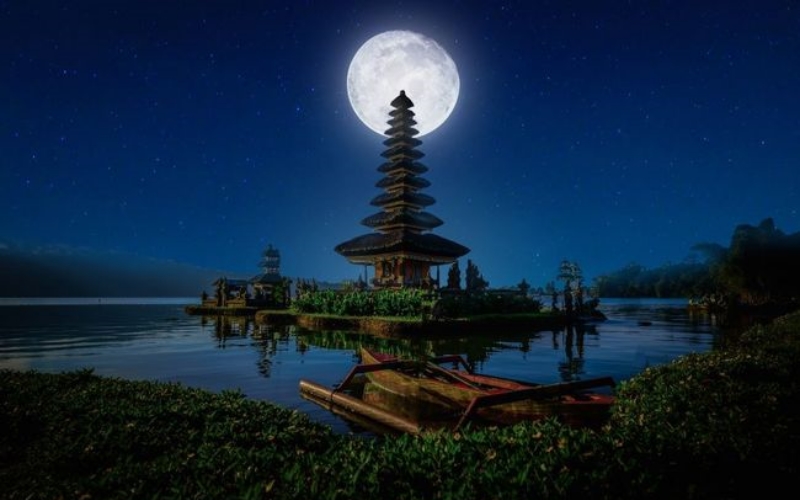You might think that its completely usual and normal when the moon has reached its full state (full moon) in Bali, the Balinese Hindu thinks it as the opposite. The moon for the Balinese has become their timeline and their guide, and is even referenced in some of their folklore stories, such as the Kala Rau. This ceremony, is called Purnama., meaning full moon but also complete, infinite, and perfect.
Hindus in Bali has a number of religious holidays which are carried out routinely in a predetermined time according to the Balinese calendar, which is based on Pawukan (wuku) which comes every 6 months or based on the Isaka calendar based on arrival of Sasih (month) which comes once every year. As for the Hindu religious holidays, or holy days that comes every month once, is the Full Moon (Purname) and Tilem day.
Purnama (or full moon) is a special day in Bali for ceremonies and festivies. Hundreds of temples all over the island will celebrate this special day, hosting impressive ceremonies in traditional clothing. The Balinese believes that Purnama is an auspiciou day, when Gods descend to the earth and give their bleesings. This special day is also consideres to be favoriable day to plant things in the garden, especially fruit plants. Purnama helps to obtain an abundant harvest of the following year.
Every each full moon is honored by the Balinese Hindu people, by preparing offerings of fruit, food, and flowers, dreesing accordingly, visiting some of the local temple, reciting mantras and holy scriptures, as well as meeting in prayer, ritual and meditation. Purnama Sasih Sadha, as the full moon celebrations are called, usually lasts from morning until midnight. The connection of the Balinese with the spirit world, the Gods, demons and ancestors is very strong so that they create their offerings with the utmost attention to detail and a loving spirit of thankfulness, not only on full moon days, but also on every normal days. In Balinese Hinduism, a number of holy days are celebrated by people with specific aim and meanings. So, what is the meaning of teh Purnama and Tilem holy day, and why do people have to make offerins to Ida Sang Hyang Widhi Wasa?
On full moon days like these, Balinese men and women dresses up in traditional attires, like sarong and white shirt for the men, meanwhile the women dresses up with a white lace jacket and a colorful belt around the waist. They take their offerings to the temple, perform sacred rituals including holy water, incense, flowers and prayer and then offer them to the Gods, which are believed to live in stone thrones inside the temple are dressed in yellow robes too. After the offerins has been made, the priest gives the respective person blesings and applies purified water and a few Bija, wet rice grains, on their forehead to strengthen their connection with God. The rice grains are a symbol of the seed of life and the syllable “Om”, the seed sound of the Universe.
It is possible to attend these ceremonies in small villages, and they are aplenty throughout Bali. Small villages offers an authentic experience and the likehood of being the only foreigner at the temple is high. In the temple of Pura Besakih, the biggest one on the island, parishioners stayed inside the temple to eat and celebrate with their friends and family.
Other Balinese ceremonis that also occurs within the lunar cycle includes Siwa Ratri, or the night of Shiva, which is believed to be the darkest of all nights; Tawur Kesanga, the festive celebration of ogoh-ogoh before Nyepi and also the day the demons come out and party; and Eka Dasa Rudra, the legendary ceremony at Besakih temple that occurs every century.

